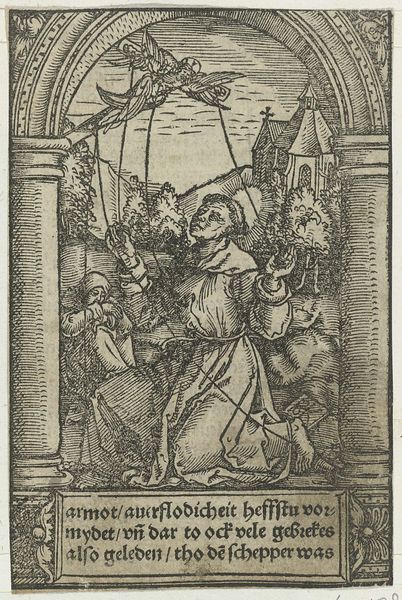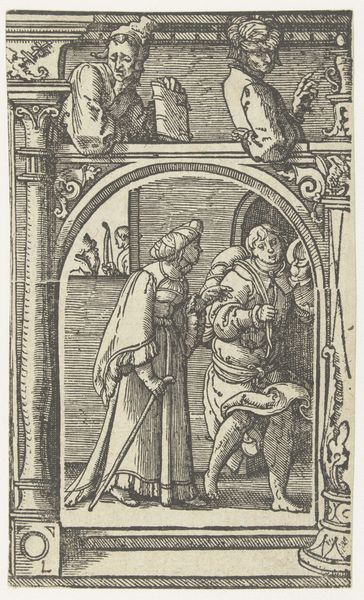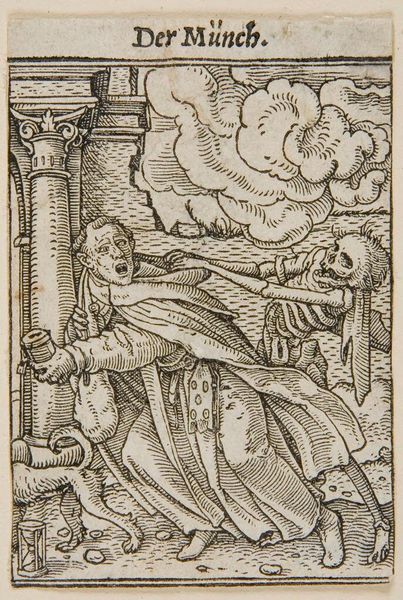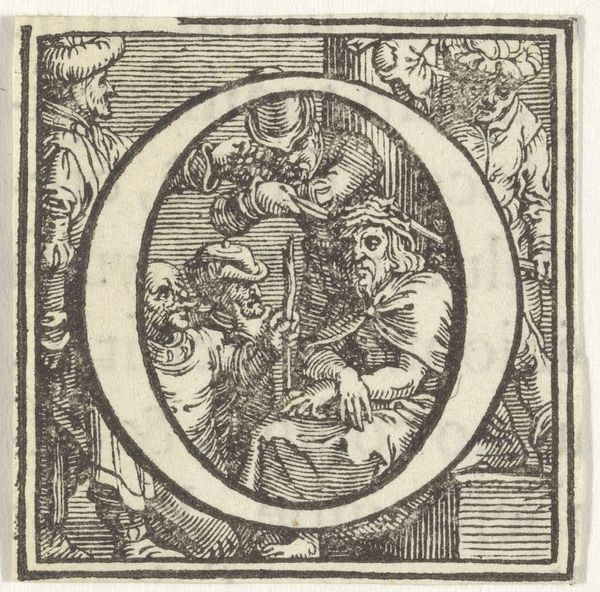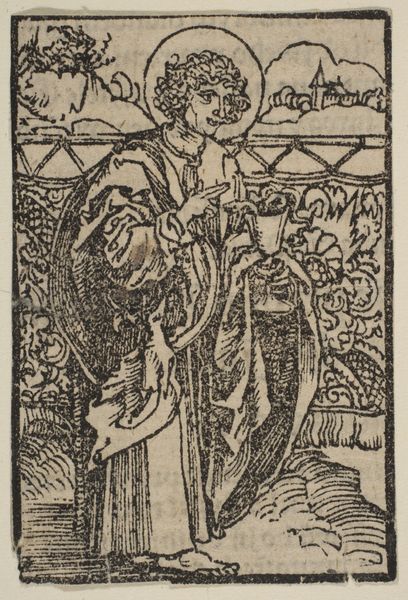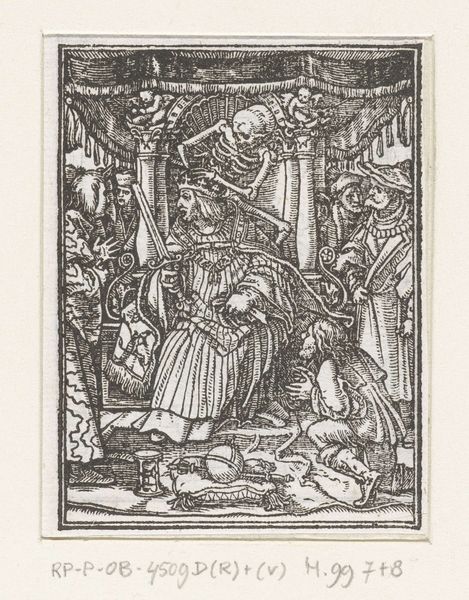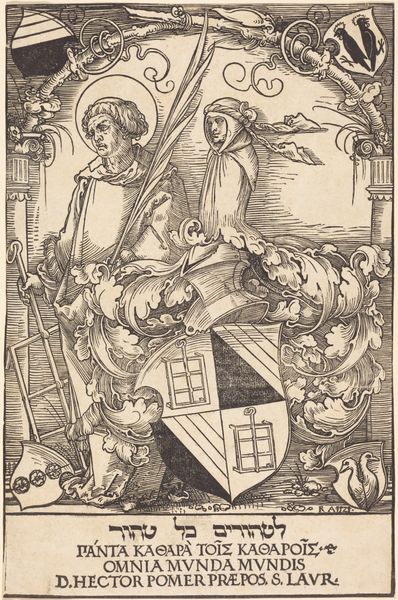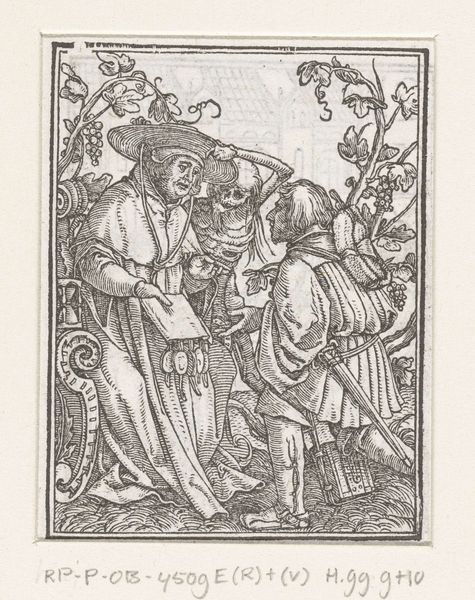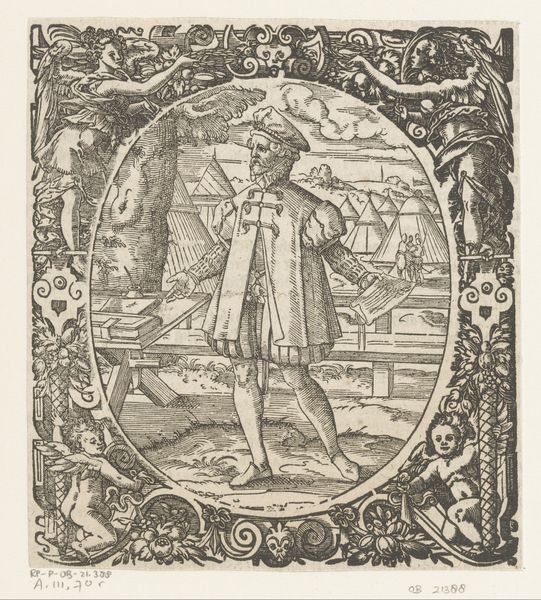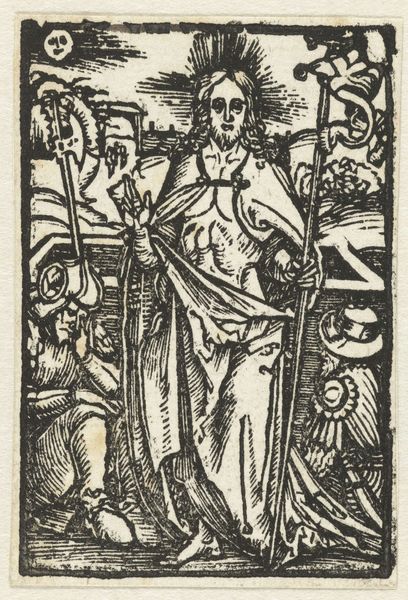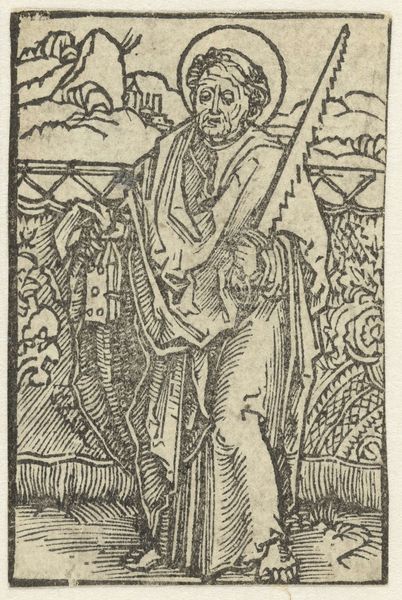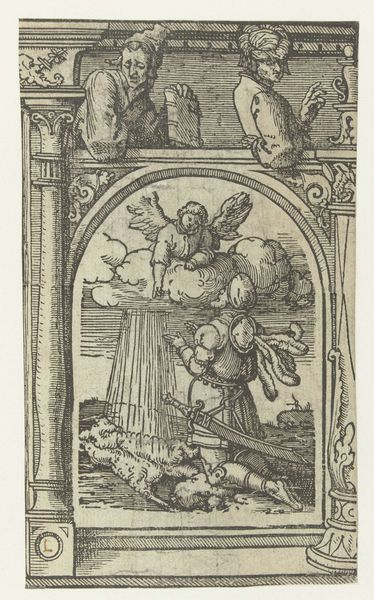
drawing, ink, woodcut, engraving
#
drawing
#
medieval
#
narrative-art
#
pen drawing
#
pen illustration
#
figuration
#
form
#
ink
#
momento-mori
#
woodcut
#
line
#
history-painting
#
northern-renaissance
#
engraving
Dimensions: height 65 mm, width 50 mm
Copyright: Rijks Museum: Open Domain
Curator: This detailed image is entitled "Monk and Death" created by Hans Holbein the Younger, dating roughly from 1524 to 1538. It’s a striking woodcut, ink on paper, part of the Rijksmuseum's collection. Editor: Visually, I'm immediately drawn to the raw emotion. The monk's expression of terror and desperation is palpable. There's a strong contrast in the texture of the lines—the frantic, swirling lines around the monk and the cold, precise lines that define the skeleton of death. Curator: Indeed. Holbein’s mastery lies in his manipulation of line and tone, using the woodcut medium to express complex ideas about mortality. His woodcuts were designed to be reproduced widely, bringing these visual meditations on death to a broad audience. What kind of statements do you see being made here about society by featuring a monk being snatched? Editor: The specific portrayal, using a monk in a rather elaborate garment, perhaps hints at the transience of worldly status and religious authority. Death comes for all, regardless of station. Look how the swirling dark clouds act as almost like a vortex, highlighting his spiritual terror. What’s curious to me is the positioning of the lion-dog to the side, which seems at first innocuous, and even loyal, sitting aside the symbolic hour glass. Yet, it is positioned to almost push back and rebel against the monk, leaving him even more vulnerable to death's pull. Curator: It’s a complex visual dance. The contrast isn’t just between life and death, but between the monk's material world – represented by the goblet, architectural background, his dress, and dog – and the encroaching reality of death. Remember, Holbein was working in a time of immense social and religious upheaval, when critiques of the Church were common. Editor: And that speaks to the artwork's accessibility. Despite being rich in visual details and formal compositional tension, it communicates a straightforward message: mortality is the ultimate leveler. The way the Grim Reaper grips the monk makes me reflect upon death as something inescapable and matter-of-fact; regardless of spiritual convictions or the comfort that gold can offer. The stark quality and lack of gray areas are almost comforting. Curator: The “Memento Mori,” a key idea from the era, as you observed earlier. Thinking of how widely such pieces circulated using affordable printmaking makes me consider the implications of this being for private viewing or communal gathering. Editor: I am left contemplating on the stark finality the piece provides—the artist reminds viewers that death comes to us all, and no matter how well or pious we live, this material world and the world beyond our own life’s experiences are all that are concrete in any existence. The only question left to ask myself is: in which direction will that life lead me.
Comments
No comments
Be the first to comment and join the conversation on the ultimate creative platform.

